Emergencies Area

What are some common types of emergencies and how should they be handled ?
Emergencies can occur at any time and place, often without warning. Knowing the types of emergencies and how to handle them is crucial for ensuring safety and minimizing harm. In this article, we will discuss some common types of emergencies and their appropriate handling methods. ## Natural Disasters Natural disasters are events caused by environmental factors that result in widespread damage and loss of life. Some common types of natural disasters include earthquakes, hurricanes, floods, wildfires, and tornadoes. When faced with a natural disaster, it is essential to stay calm, seek shelter, follow evacuation orders, have an emergency kit ready, and stay informed about the situation. ## Medical Emergencies Medical emergencies refer to situations where immediate medical attention is required to prevent serious harm or death. Some common types of medical emergencies include heart attacks, strokes, severe allergic reactions, severe bleeding, and choking. When dealing with a medical emergency, it is crucial to call for help, perform first aid if trained, use automated external defibrillators (AEDs) if available, do not move the victim unless necessary, and stay with the victim until help arrives. ## Fire Emergencies Fire emergencies involve uncontrolled fires that pose a threat to people and property. Some common types of fire emergencies include house fires, wildfires, car accidents involving fire, and industrial fires. When facing a fire emergency, it is important to activate fire alarms/alert others, evacuate safely through designated exits, call emergency services immediately, do not reenter burning buildings, and use fire extinguishers appropriately if trained and safe to do so. In conclusion, being prepared for emergencies is crucial for ensuring safety and minimizing harm. By understanding common types of emergencies and their appropriate handling methods, individuals can respond effectively in crisis situations. Remember to stay calm, act quickly, and follow proper procedures to protect yourself and others.

How can I prepare for an emergency situation ?
The article provides a comprehensive guide on how to prepare for an emergency situation. It emphasizes the importance of being prepared for emergencies, which can strike at any time and pose a threat to the safety of individuals and their loved ones. The first step in preparing for an emergency is to assess the risks that are most likely to affect you. This involves identifying potential natural disasters or man-made emergencies that could occur in your area. Once you have identified these risks, you can begin to develop a plan for how to respond. The next step is to create an emergency kit that contains all the essential items you will need in case of an emergency. This includes water, non-perishable food, a first aid kit, a flashlight, warm clothing, a map of the area, a cell phone with charger, cash, and important documents. Having a plan in place is also crucial in ensuring that everyone knows what to do in case of an emergency. Your plan should include a designated meeting place, an evacuation route, a communication strategy, and a backup plan. Staying informed about local weather reports and news alerts is another important aspect of emergency preparedness. Signing up for community warning systems can also help you stay informed about potential emergencies in your area. Finally, practicing your emergency plan regularly can help ensure that everyone remains calm and focused during an actual emergency situation. This could involve conducting regular fire drills or practicing evacuation routes.
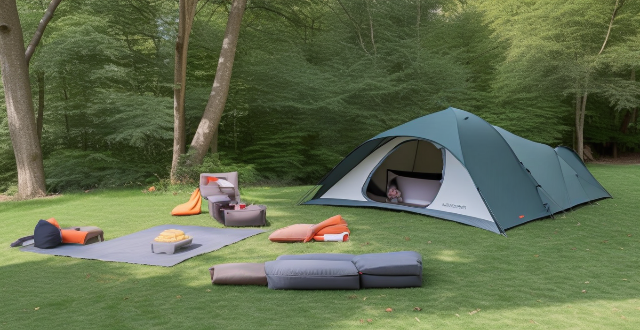
What are some examples of climate emergencies that have already occurred ?
Climate emergencies are events or situations that pose a significant threat to human health, safety, and the environment due to the impacts of climate change. Examples include extreme weather events such as heatwaves, hurricanes, and floods, as well as ecological disasters like coral reef bleaching, forest dieback, and melting glaciers. These emergencies underscore the urgent need for action to mitigate the effects of climate change and adapt to its impacts.
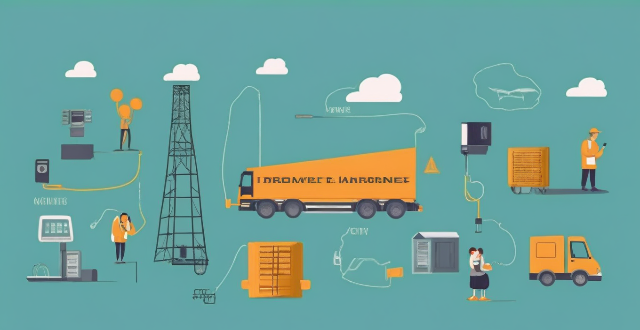
How important is it to have a backup power source in case of emergencies ?
The importance of having a backup power source in case of emergencies is crucial in today's world where we rely heavily on electricity. A backup power source can prevent data loss, maintain essential services, ensure safety, reduce downtime, and improve quality of life during power outages. There are various types of backup power sources available, including UPS, generators, solar power systems, and battery backups. Investing in a backup power source is an investment in peace of mind and preparedness for any emergency situation.

How do I assemble an emergency preparedness kit for my office ?
The text provides a detailed guide on how to assemble an emergency preparedness kit for your office, highlighting the importance of being prepared for potential emergencies. It outlines the steps involved in creating a comprehensive kit, including identifying potential emergencies, choosing a suitable container, and selecting essential items such as water, food, first aid supplies, light sources, battery-powered radios, personal items, tools, important documents, and sanitation supplies. The article emphasizes the need to regularly check and update the kit to ensure its usability and relevance to potential emergencies in the area.

Is fiber optic broadband available in my area ?
Fiber optic broadband is becoming increasingly popular due to its high speed and reliability. However, the availability of fiber optic broadband depends on the area you live in. In this article, we will discuss how to check if fiber optic broadband is available in your area. The first step is to check with your current internet service provider (ISP) if they offer fiber optic broadband in your area. You can contact them through their website or customer service hotline. They should be able to provide you with information about the availability of fiber optic broadband in your area. There are several online tools that can help you determine if fiber optic broadband is available in your area. One such tool is the [National Broadband Map](https://www.broadbandmap.gov/), which provides detailed information about broadband availability across the United States. Another tool is the [Google Fiber Checker](https://fiber.google.com/cities/), which allows you to enter your address and see if Google Fiber is available in your area. Local government agencies may also have information about the availability of fiber optic broadband in your area. You can contact your city or county government office and ask if they have any information about fiber optic broadband providers in your area. If you have friends or neighbors who use fiber optic broadband, you can ask them if they know of any providers in your area. They may be able to provide you with valuable information about the availability of fiber optic broadband in your area. In conclusion, checking the availability of fiber optic broadband in your area can be done by contacting your ISP, using online tools, checking with local government agencies, and asking your neighbors. By following these steps, you can determine if fiber optic broadband is available in your area and choose the best provider for your needs.

In what situations should I call emergency services immediately ?
This text explains the importance of calling emergency services immediately in life-threatening situations. It outlines various scenarios where immediate action is crucial, including major accidents and injuries, serious medical emergencies, sudden changes in health status, environmental emergencies, and mental health crises. The text emphasizes the significance of prompt action to save lives and prevent further harm, advising readers to stay calm and provide detailed information to the dispatcher.

How can I quickly clear out and organize my desk area ?
Clearing out and organizing your desk area is a task that requires both physical effort and mental clarity. Here are some steps to help you get started: ### Step 1: Remove everything from your desk First, take everything off your desk. This includes papers, pens, books, electronic devices, and any other items that may be cluttering up your workspace. - Papers: File them away or recycle them if they are no longer needed. - Pens and pencils: Place them in a cup or holder. - Books: Store them on a nearby shelf or in a cabinet. - Electronic devices: Unplug them and store them in a safe place. ### Step 2: Clean your desk Once everything is off your desk, it's time to clean it. Use a damp cloth to wipe down the surface of your desk, being sure to get into all the nooks and crannies. If there are any stubborn stains, use a small amount of soap and water to remove them. ### Step 3: Organize your space Now that your desk is clean, it's time to start organizing your space. Here are some tips: - Create zones: Designate specific areas for different tasks. For example, one side of your desk could be for writing and another for computer work. - Use storage containers: Invest in some storage containers or drawer dividers to keep small items organized. - Label everything: Label folders, boxes, and drawers so you know where everything goes. - Keep only what you need: Don't let unnecessary items clutter up your workspace. Only keep what you need within arm's reach. ### Step 4: Maintain your organization Finally, it's important to maintain your newly organized desk area. Make sure to put things back where they belong after each use, and take a few minutes at the end of each day to tidy up your workspace. By doing this, you'll be able to keep your desk area clean and organized for years to come!
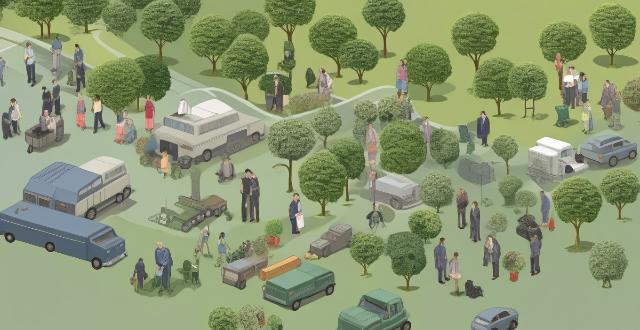
How can countries improve their preparedness for global health emergencies ?
Countries can improve their preparedness for global health emergencies by strengthening healthcare infrastructure, developing surveillance and early warning systems, enhancing international cooperation, improving public health education and awareness, and establishing contingency plans and policies.

How can I stay informed about potential disasters in my area ?
In the text, the author discusses the importance of staying informed about potential disasters in one's area and provides steps to achieve this. The key takeaways are that knowledge is power, timely information can make a significant difference in safety and damage control, and being informed helps contribute positively to community preparedness efforts. The steps to stay informed include identifying local alert systems such as local government websites and apps, the National Weather Service, and emergency management agencies. Subscribing to alert services like Wireless Emergency Alerts, NOAA Weather Radio, and email newsletters and text messages from local authorities is also recommended. Social media and news sources can provide real-time updates, but it is important to ensure that the information comes from a verified source to avoid misinformation. Community networks such as neighborhood watch groups, town hall meetings, and volunteering for local emergency response teams can also provide valuable information. Regular updates and drills, such as reviewing and updating personal and family emergency plans, participating in local evacuation drills or safety exercises, and taking advantage of educational resources like FEMA's "Are You Ready?" campaign, can help individuals stay informed and prepared for potential disasters. Overall, the text emphasizes the importance of staying informed about potential disasters in one's area and provides practical steps to achieve this goal.

How do I train my employees for emergency situations ?
Training employees for emergency situations is crucial to ensure their safety and minimize the impact of emergencies on your business. Here's a summary of the key steps involved: 1. Identify potential emergencies that could occur in your workplace, such as fire, medical emergencies, natural disasters, workplace violence, and chemical spills or hazardous materials incidents. 2. Develop an emergency plan that outlines the steps employees should take during each type of emergency. This plan should include evacuation procedures, first aid protocols, contact information for emergency services, safe locations, and procedures for accounting for all employees after an emergency. 3. Conduct regular emergency drills to ensure that employees are familiar with the emergency plan and know what to do in case of an emergency. Drills should be conducted at least annually and cover all types of emergencies identified in the emergency plan. 4. Provide training on how to use safety equipment such as fire extinguishers, first aid kits, and safety goggles. This training should be provided during new employee orientation and refresher courses should be offered regularly. 5. Encourage open communication between employees and management regarding safety concerns and suggestions for improvement. This can be done through regular safety meetings, suggestion boxes, or anonymous surveys. By following these steps, you can create a safe and prepared workforce that is ready to handle any emergency situation.
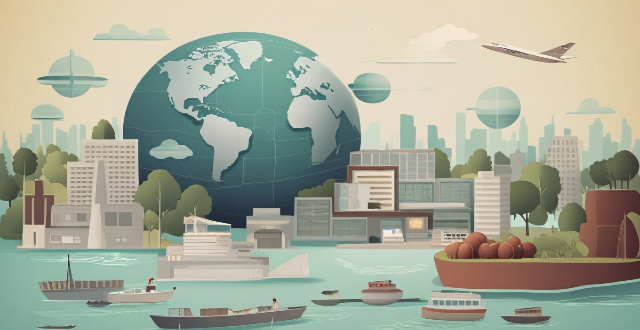
How can satellite communication be used for emergency response and disaster relief ?
Satellite communication is critical in emergency response and disaster relief, offering global coverage, high availability, scalability, and multipurpose use. It enables immediate alerts, coordination, resource deployment, and medical assistance during emergencies. In disaster relief, it aids damage assessment, information dissemination, infrastructure recovery, and aid distribution. Key technical aspects include satellite phones, VSAT terminals, and data collection through sensors. Proper logistics such as training, maintenance, and partnerships with service providers are crucial for effective utilization. Satellite communication significantly enhances the capability to respond to natural disasters and emergencies, reducing their impact on lives and properties.

What are the best practices for篝火 safety to prevent uncontrolled fires ?
Fire safety is crucial when enjoying a bonfire. Here are some best practices to ensure a safe and enjoyable experience: 1. Choose the Right Location: Find a clear area away from trees, bushes, and any other flammable materials. Ensure that the fire pit or ring is made of non-flammable materials. 2. Check Local Regulations: Be aware of any local laws or regulations regarding open fires. Obtain necessary permits if required. 3. Gather Supplies: Have a fire extinguisher or a bucket of sand/water nearby. Prepare shovels and other tools for tending the fire and emergency situations. 4. Stack Wood Properly: Use dry, seasoned wood to reduce smoke and flame-ups. Build a 'log cabin' or 'teepee' structure for better airflow. 5. Light the Fire Safely: Use a match or lighter; avoid using accelerants like gasoline or lighter fluid. Light the fire from the upwind side to prevent sparks from blowing onto you. 6. Keep the Fire Small: Only build a fire as big as needed for warmth and light. Don't add too much fuel at once; keep it manageable. 7. Never Leave the Fire Unattended: Always have someone present to watch the fire. Have a plan in place for emergencies or if you need to leave temporarily. 8. Monitor Wind Conditions: Be aware of changing wind patterns that could spread sparks or embers. If conditions become unsafe, be prepared to extinguish the fire promptly. 9. Properly Extinguish the Fire: Drown the fire with water, ensuring that all embers are wet and cold to the touch. Stir the ashes and add more water until everything is completely soaked. 10. Dispose of Ashes Carefully: After the fire is completely out, allow the ashes to cool before disposal. Place ashes in a metal container and dispose of them in a proper location. 11. Clean Up the Area: Remove any trash or leftover materials from the site. Leave the area cleaner than you found it.

How can I be prepared for medical emergencies while traveling abroad ?
This text provides advice on how to be prepared for medical emergencies while traveling abroad. It suggests researching healthcare options, getting travel insurance, packing a travel medicine kit, learning basic first aid, knowing emergency numbers, staying healthy, and keeping important information handy.

What are some common pitfalls when creating a household budget ?
When creating a household budget, people often fall intoWhen creating a household budget, people often fall into can lead to financial difficulties and people often fall into common pitfalls that can lead to financial difficulties and make it harder to achieve financial goals. These pitfalls include not tracking expenses, underestimating expenses, ignoring debt repayment, failing to plan for emergencies, and overspending on non-essentials. To avoid these mistakes, people should keep track of all expenses, be realistic when estimating expenses, prioritize paying off high-interest debt, set aside money for emergencies, and limit discretionary spending. By avoiding these pitfalls, people can create a budget that works for them and helps them achieve their financial goals.

How do sports event organizers ensure the safety of participants and spectators ?
Sports event organizers have a significant responsibility to ensure the safety of participants and spectators. This comprehensive guide outlines the various measures taken by organizers to guarantee a safe environment for everyone involved, including risk assessment and planning, security measures, medical support and services, spectator education, participant safety, and venue maintenance.

What are the best practices for storing food and water for emergencies ?
When it comes to emergency preparedness, having a reliable supply of food and water is essential. Here are some best practices to ensure that you have what you need in case of an emergency: Food Storage: - Rotate regularly - Choose wisely - Portion control - Stay organized - Store safely Water Storage: - Quantity matters - Container choice - Replace regularly - Sanitize containers - Maintain accessibility Additional Tips: - Have a plan - Prepare for special needs - Be ready to cook

What are the best restaurant deals in my area ?
Finding the best restaurant deals in your area can be a fun and rewarding experience. Here are some tips on how to find the best deals near you: check local listings, follow social media, sign up for newsletters, use restaurant review websites, and ask friends and family for recommendations.

How can I discover new cycling routes in my area ?
Finding new cycling routes can be an exciting adventure. Here are several ways to discover new cycling routes in your area: 1. Use cycling apps and websites like Strava, Komoot, Ride with GPS, and Bikemap. 2. Join local cycling groups through Meetup, cycling clubs, or Facebook groups. 3. Check with local bike shops for route recommendations and group rides. 4. Look at city or county parks departments for maps and events showcasing new routes. 5. Ask friends and family for hidden gem routes and join their rides. 6. Explore on your own by scouting detours on familiar rides and using maps. 7. Attend cycling events like road races and bike festivals to learn about new routes. 8. Use Google Maps to plan custom routes and spot potential paths in satellite view. 9. Check out local guidebooks on cycling in your region at bookstores or the library. 10. Visit local tourist information centers for brochures and advice on scenic routes. By utilizing these methods, you can expand your cycling horizons and enjoy the thrill of discovering new routes in your area while riding safely and respecting the rules of the road and trail.

Can you recommend a good Japanese restaurant in my area ?
The text provides recommendations for finding a good Japanese restaurant in one's area. It suggests checking online reviews, asking locals for recommendations, looking for specialties, and considering the ambiance. The steps to follow include searching online, making a list of potential restaurants, narrowing down options, calling ahead, and trying them out. The author encourages readers to enjoy their culinary adventure and discover personal favorites.

What are the best mobile operators in my area ?
Choosing the best mobile operator in your area requires careful consideration of several factors, including coverage, data speeds, pricing, customer service, and network reliability. Some of the best options based on these criteria are Verizon, AT&T, and T-Mobile. Each operator has its own strengths and weaknesses, so it's important to do your research and choose the one that best meets your needs and budget.

How do I find out about upcoming brand sale events in my area ?
Finding Upcoming Brand Sale Events in Your Area: - Follow brands on social media, subscribe to newsletters, check retailer websites, and local newspapers/magazines. - Use deal websites/apps, join brand loyalty programs, network with friends/family, and check community boards. - Set up Google Alerts for brands and visit outlet stores frequently.

How often should air quality monitoring be conducted ?
Air quality monitoring is crucial for ensuring safe and healthy air, with the frequency of such monitoring influenced by various factors. Urban areas typically require daily monitoring due to high pollution levels, while rural areas may only need weekly or monthly checks. Special situations, like emergencies or natural disasters, might necessitate continuous monitoring. The goal is to balance between tracking long-term trends and identifying short-term spikes in pollution, all while considering available resources.

How do I ensure my pets are safe during an emergency situation ?
Ensuring your pets' safety during emergency situations is crucial, and there are several steps you can take to prepare. Firstly, proper identification through microchipping and collar tags is essential. Secondly, having an evacuation plan with a designated caregiver and shelter options is important. Thirdly, preparing an emergency kit with necessary supplies is vital. Fourthly, staying informed about potential emergencies in your area is crucial. Lastly, practicing evacuation drills can help familiarize your pets with the process. By following these steps, you can ensure the safety of your pets during emergency situations.

How can I find a sports club or group in my area to join ?
Finding a sports club or group in your area can be an exciting and rewarding experience. To help you find one, follow these steps: 1. Determine your interests by identifying the sports or activities that interest you. 2. Research online using directories like Sports Club Finder, Meetup, and Facebook Groups. 3. Check local recreation centers and parks for available options. 4. Ask friends, family members, or coworkers for recommendations. 5. Attend local sporting events to interact with other athletes and learn about nearby clubs. 6. Join online forums and social media groups dedicated to specific sports. 7. Be open to trying new things and exploring different sports or activities.

How should protective clothing be properly disposed of after use ?
Proper Disposal of Protective Clothing After Use: - Remove clothing carefully in a designated area to avoid cross-contamination. - Place used clothing in a sealable plastic bag and seal tightly. - Label the bag with "Biohazard" or "Contaminated" and include the date and time of disposal. - Dispose of the bag properly according to your organization's protocols or local waste management facility guidance. - Clean and disinfect the area where you removed your protective clothing. - Wash your hands thoroughly with soap and water for at least 20 seconds. - If exposed to a contagious disease, monitor for symptoms and seek medical attention if necessary.
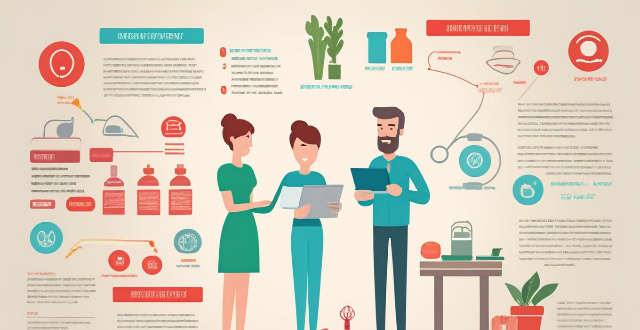
How can I ensure the safety of my family during an emergency ?
To ensure the safety of your family during an emergency, create an emergency plan that includes a contact list, meeting place, escape routes, and assigned responsibilities. Maintain essential supplies such as food, water, medical supplies, and an emergency kit. Stay informed about local emergencies through news sources, alert apps, and local alert systems. Secure your home by inspecting for hazards, reinforcing doors and windows, and having smoke detectors and fire extinguishers. Educate your family on self-defense techniques, first aid and CPR, and discuss potential emergencies.

What is the easiest way to patch a small hole in the ceiling ?
Patching a small hole in the ceiling is a straightforward DIY project that requires basic tools and materials. To begin, clean the area around the hole with a damp cloth to ensure proper adhesion of the spackling compound. Apply a small amount of spackling compound to the hole using a putty knife or spatula, spreading it evenly over the hole and slightly beyond its edges. Allow the compound to dry completely according to the manufacturer's instructions, then sand the area until it is level with the surrounding ceiling surface. Apply a coat of primer paint to the patched area, followed by a coat of ceiling paint that matches your existing ceiling color. Work in a well-ventilated area, use a ladder or step stool for safety, and consider hiring a professional if you are unsure about your ability to repair the hole.

What are some successful examples of ecological protection areas around the world ?
Ecological protection areas play a crucial role in preserving biodiversity, maintaining ecosystem services, and protecting natural landscapes. Successful examples include the Great Barrier Reef Marine Park in Australia, Yellowstone National Park in the United States, Galapagos National Park in Ecuador, Banff National Park in Canada, and Sian Ka'an Biosphere Reserve in Mexico. These areas have implemented various management strategies such as zoning systems, reintroducing wolves, controlling invasive species, promoting sustainable tourism practices, involving local communities in conservation efforts, and restoring degraded areas.